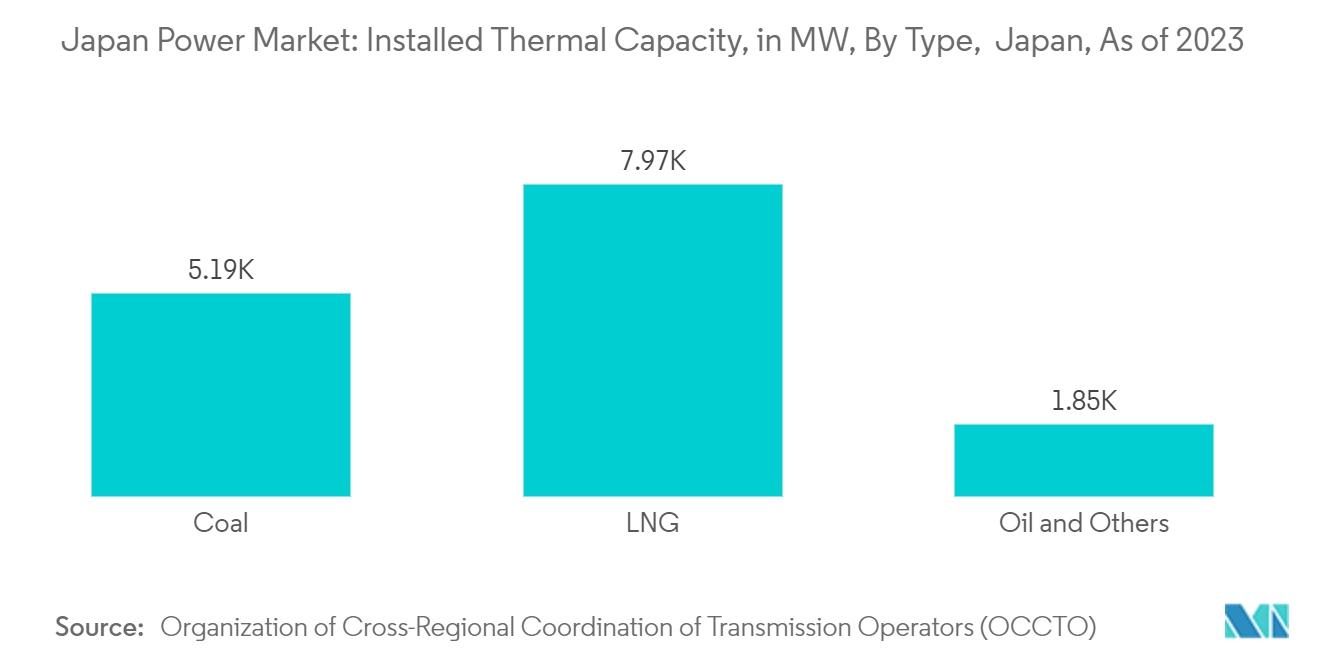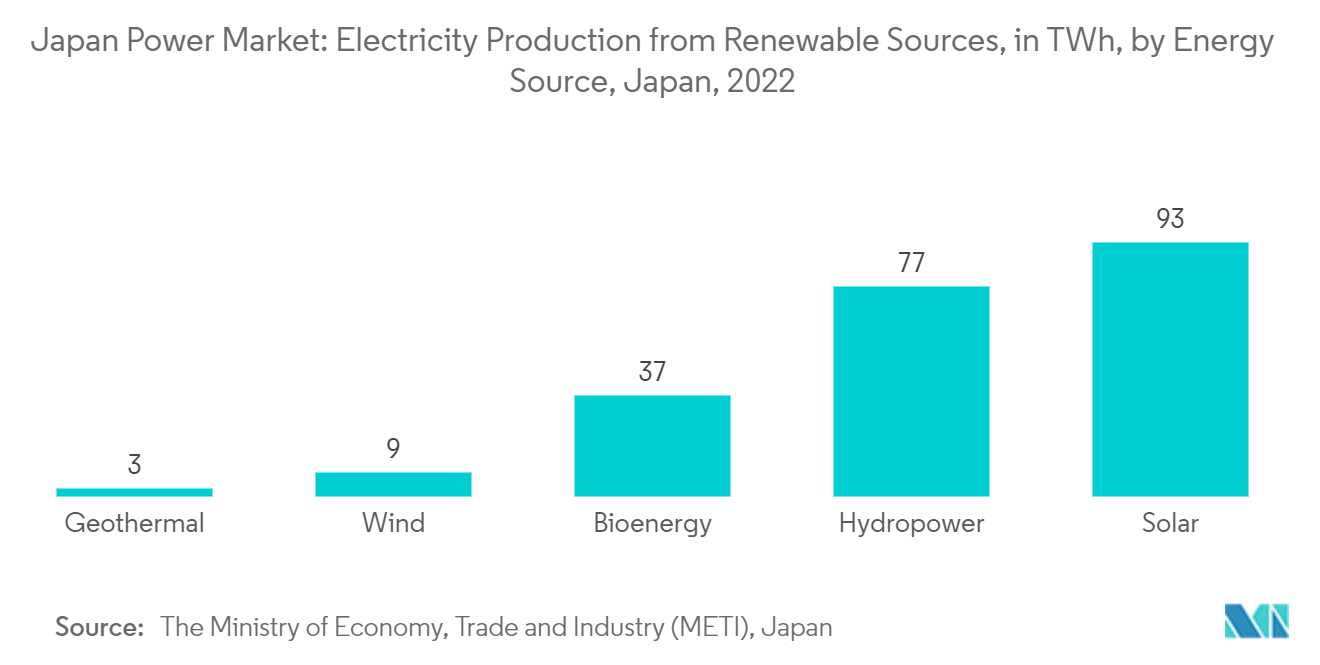Market Trends of Japan Power Industry
Thermal Power Generating Source is Expected to Dominate the Market
- As of 2023, Japan’s thermal power plant sector was the largest contributor to Japan’s power mix, accounting for nearly 46.96% of the country’s total installed capacity. As of 2023, according to the Organization of Cross-Regional Coordination of Transmission Operators (OCCTO), the country had nearly 150.06 GW of installed thermal capacity, coming from more than 481 power plants.
- According to Ministry of Economy, Trade, and Industry (METI) data, Japan has nearly 214 electricity generation companies that own thermal electricity generation assets. However, the Japanese thermal power market is dominated by former general electric utilities, with only ten companies having a total installed thermal capacity exceeding 3 GW, which include major companies such as Hokkaido Electric Power Co., Tohoku Electric Power Co., JERA, Hokuriku Electric Power Co., and Kansai Electric Power Co.
- The Japanese thermal power sector is dominated by LNG-fired plants, which account for nearly 53.1% of the total power capacity. According to METI statistics, Japan has 69 plants, with an average installed capacity of 1.1 GW. This is followed by coal-fired power plants, which account for nearly 95 plants and 32.2% of the total installed capacity.
- However, since the start of the Russia-Ukraine conflict, Japan’s LNG supply situation has become increasingly dire. For instance, in 2023, nearly 6 million tonnes/year (MTPA) of long-term LNG supply contracts expired, which was expected to reduce the country’s contractual LNG supply by nearly 8%.
- To reverse this trend, Japanese companies negotiated new deals with major LNG-supplying nations in 2022. For instance, in December 2022, Japanese companies signed major long-term LNG procurement deals with the United States and Oman to secure fuel supplies and avoid future shortages. In December 2022, Japanese electricity generator JERA and trading houses Mitsui & Co. and Itochu Corp. signed a basic agreement with supplier Oman LNG to import a total of about 2 MTPA of LNG from Oman over ten years, starting from 2025.
- Therefore, owing to the factors mentioned above, the thermal source for power generation is expected to be the largest segment of the power market during the forecast period.

Advancements in Renewable Energy Technologies and Supportive Government Initiatives
- Japan's renewable power sector is poised for significant growth, driven by robust government initiatives to transition toward cleaner energy sources and ongoing advancements in renewable technology. The nation has set ambitious climate targets, aiming for carbon neutrality.
- In October 2021, Japan unveiled its Sixth Strategic Energy Plan, outlining a goal to elevate the share of renewable energy in its energy mix by 36% to 38% by 2030. With a shift away from nuclear power, Japan is increasingly embracing renewables like solar, wind, and tidal power, aiming to reduce reliance on foreign energy and foster domestic energy innovation.
- In October 2020, the Japanese Ministry of Economy, Trade, and Industry (METI) unveiled the Japanese Green Growth Strategy, aiming for carbon neutrality by 2050. The strategy outlined an ambitious push for renewables, a revival of nuclear power, and the adoption of cutting-edge technologies like low-carbon hydrogen, advanced nuclear reactors, and carbon recycling. In 2021, the strategy underwent revisions, emphasizing significant investments in energy and other sectors' research and innovation, potentially influencing corporate R&D policies. These developments are poised to drive advancements in renewable technologies.
- In April 2021, Fujitsu Limited and AutoGrid Systems Inc. announced Fujitsu's plans to introduce AutoGrid's Virtual Power Plant (VPP) solution to the Japanese market. This move aims to optimize the utilization of distributed energy resources, bolster renewable energy adoption, and accelerate decarbonization efforts.
- In 2022, the electricity produced from solar power in Japan stood at about 93 TWh, and hydropower accounted for over 77 TWh. To reduce greenhouse gas emissions and be less dependent on fossil fuel imports, the Japanese government is currently working on expanding electricity production from renewable energy sources in the forthcoming years.
- As part of the agreement, Fujitsu is set to market AutoGrid's flagship VPP solution, the AutoGrid FlexTM, in Japan. These systems offer enhanced monitoring and control capabilities, optimizing power generation operations. Japan is actively seeking cost-effective, low-carbon electricity production technologies, making advancements in renewables pivotal for the country's energy landscape in the coming years.
- Given this strong government backing, including policies, schemes, and ambitious renewable targets, the renewable energy market in Japan is poised for growth in the coming years.

